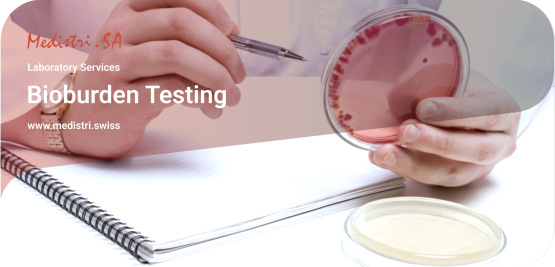(Download: Bioburden Testing in PDF by Medistri)
Bioburden testing is a fundamental microbiological analysis used to assess the level of microorganisms present on a medical device or other sterile product before it is sterilized. It involves collecting a sample from the product and then growing and counting any microorganisms present in the sample.
The results of bioburden testing are important because they provide critical information about the microbial load on a sterile product before it is sterilized. By determining the number and types of microorganisms present, bioburden testing can help manufacturers to identify potential sources of contamination and to evaluate the effectiveness of their sterilization processes.The results of bioburden testing are important because they provide critical information for ensuring the safety and efficacy of sterile products, and help manufacturers to identify and address potential sources of contamination.
Bioburden testing is a regulatory requirement for medical devices as outlined in the international standard ISO 11737-1:2018 "Sterilization of health care products - Microbiological methods - Part 1: Determination of a population of microorganisms on products". This standard specifies the requirements and provides guidance for the determination of the bioburden on medical devices prior to sterilization. Bioburden testing is a regulatory requirement for medical devices to ensure their safety and efficacy. Manufacturers must comply with industry standards and regulatory requirements, and bioburden testing is an important part of the quality control process for the manufacture of sterile medical devices.
Regulations provide a framework for controlling the maximum microbial load before sterilization to ensure the safety and efficacy of the product. The main sources of contamination include raw materials, the production environment, the manufacturing process (including the presence of humans), and pharmaceutical water.
The two most commonly used methods are membrane filtration and direct inoculation.
👉 Membrane filtration: In this method, a known quantity of the sample is passed through a membrane filter with a defined pore size. The filter is then placed on a suitable nutrient agar medium and incubated for a specified time period to allow the microorganisms to grow. After incubation, the number of colonies on the filter is counted and used to calculate the bioburden in the original sample.
✔ Advantages of membrane filtration include its simplicity, reproducibility, and high sensitivity. It is also suitable for testing large volumes of samples.
👉 Direct inoculation: In this method, a known quantity of the sample is added directly to a suitable nutrient agar medium and spread over the surface. The plate is then incubated for a specified time period to allow the microorganisms to grow. After incubation, the number of colonies on the plate is counted and used to calculate the bioburden in the original sample.
✔ Advantages of direct inoculation include its simplicity and low cost. It is also suitable for testing small volumes of samples.
Medistri’s in-house laboratory possesses an in-depth comprehension of the Bioburden Testing execution process .Our expertise and deliver precise results to meet your regulatory requirements.
🎯 To learn more about Medistri’s Bioburden Testing services, visit on our website https://www.medistri.swiss/bioburden-testing or directly contact our team at [email protected].
- The Medistri Team
#Medistri
